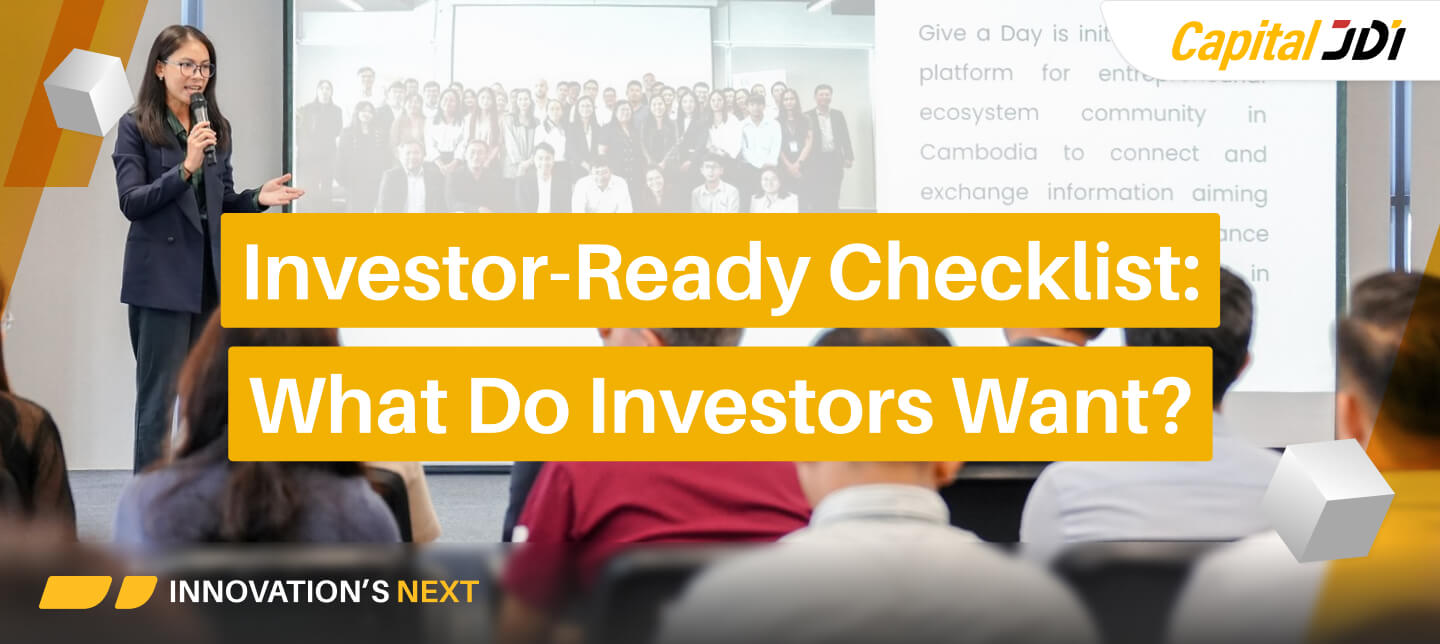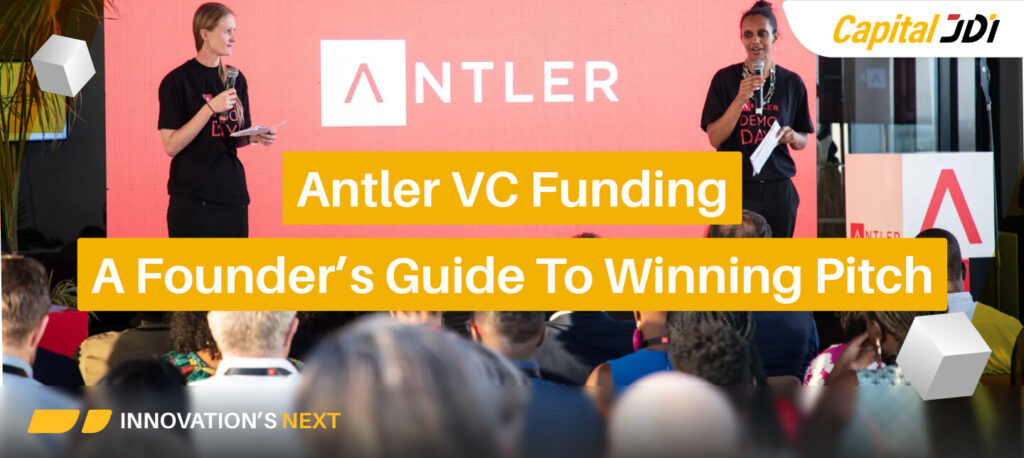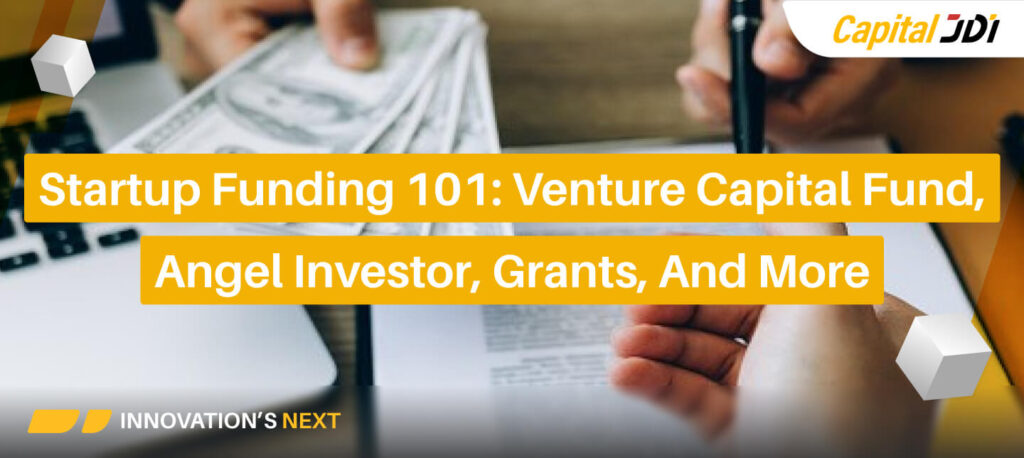What do investors want at the Seed or Series A round? Raising your funds at these stages is a huge milestone. It’s exciting, a little nerve-wracking, and—let’s be honest—sometimes confusing. How do you stand out from the dozens (or hundreds) of other startups pitching for the same pool of capital?
The truth is, while every investor has their own quirks, there’s a core set of things they all want to see. So here is a checklist that breaks down those essentials, explains why they matter, and gives practical pointers to help you nail each one.
What Do Investors Want In 2025?
If you’re raising in Southeast Asia this year, you’ll notice the game has changed. Investors in the region are sharper, more data-driven, and a lot more focused on real, sustainable growth than ever before. The “growth at all costs” era is fading fast—now, VCs and angels want to see that you’re building a business that can actually last.
So, what’s the difference? For starters, SEA investors are digging deeper into your numbers. They want to see not just user growth, but real traction, healthy unit economics, and a believable path to profitability. If you’re burning cash with no plan to turn the corner, expect some tough questions.
Local context matters more than ever. Investors want to know you’re not just copy-pasting a Silicon Valley idea, but actually solving a problem that’s unique to Southeast Asia—whether that’s logistics in Indonesia, digital payments in Vietnam, or financial inclusion in the Philippines. If you’ve got partnerships, pilots, or traction that prove you “get” the local market, now’s the time to show it off.
Another big shift: ESG (Environmental, Social, and Governance) is moving up the priority list. More funds are asking about your impact, your sustainability practices, and how you’re thinking about long-term value, not just short-term wins.
But what do investors want in SEA in 2025? They are looking for founders who are resilient, adaptable, and laser-focused on building real businesses. They want to see that you understand the regulatory and cultural landscape, that you’re ready to talk about profitability (not just growth), and that you have the grit to win in a fast-changing, competitive region.
Quick tips to stand out with SEA investors this year:
- Show you understand the local market—regulations, culture, and customer behavior.
- Be ready to talk about your path to profitability, not just how fast you can grow.
- Highlight any traction, partnerships, or pilots that prove you can win in Southeast Asia.
- If you have an ESG or impact angle, make it clear, measurable, and relevant.
For more on what the top active SEA venture capitals are, check out our curated list here.
Investor-Ready Checklist: What You Need to Win
What Do Investors Want: Clear, Scalable Business Model
A business model isn’t just “how you make money”—it’s the engine that powers your startup. So, what do investors want at the Seed stage? They want to see that you’ve thought deeply about your revenue streams, pricing, and how you’ll eventually make this a big business. By Series A, you should have early proof that your model works and can scale.
Why does this matter?
Investors are looking for startups that can become really big. They want to know that if they put in $1 today, it could turn into $10, $100, or more in the future. A scalable business model means your revenue can grow much faster than your costs. If your model is too dependent on manual work, or if your margins are razor-thin, it’s a red flag.
Example
Let’s say you’re building a SaaS platform for small businesses. Your model is subscription-based, charging $50/month per customer. You show that as you add more customers, your cost to serve each one drops (thanks to automation and cloud infrastructure). You also have a plan to upsell premium features, increasing your average revenue per user (ARPU) over time.
What Do Investors Want: Compelling Value Proposition & Differentiation
When thinking about what investors look for in a company, a strong value proposition is key. Your value proposition is the answer to “Why should anyone care?” It’s what makes you different and better than the competition. This isn’t just about features—it’s about the unique benefit you deliver to your customers.
Why does this matter?
Investors see a lot of “me too” startups. If you can’t clearly explain what sets you apart, it’s hard for them to get excited. Differentiation is what gives you a shot at winning your market and delivering a winning pitch, rather than getting lost in the noise.
Example
Imagine you’re launching a new payments app. Instead of just being “another wallet,” your app lets migrant workers send money home instantly, with zero fees, using blockchain rails. You’ve partnered with local banks in both countries to make cash-out seamless. That’s a clear, differentiated value proposition.
What Do Investors Want: Validated Market Demand
Market validation is proof that real people want what you’re building. So, what do investors want at the Seed stage? This might be a waitlist, pilot users, or signed letters of intent. By Series A, investors want to see paying customers, repeat usage, and ideally, some word-of-mouth growth.
Why does this matter?
Ideas are cheap—execution and demand are everything. Investors want to see that you’ve moved beyond the “cool idea” stage and that there’s real, tangible interest from your target market. This de-risks their investment.
Example
You’re building a B2B SaaS tool for logistics companies. Before raising your Pre-seed or Seed round, you run a pilot with three local firms, who sign letters of intent to pay once the product is live. Before Series A, you’ve converted those pilots into paying customers and have a pipeline of 20 more companies interested.
What Do Investors Want: Strong Traction and Performance Metrics
Traction is proof that your business is moving forward. So, what do investors want to see? This could be user growth, revenue, engagement, retention, or any other metric that shows momentum. The key is to pick the metrics that matter most for your business and track them consistently.
Why does this matter?
Investors want to see that you’re not just talking a big game—you’re actually delivering results. Traction is the best predictor of future success, and it helps investors justify their decision to back you.
Example
You’re running a consumer app. Over the last six months, your monthly active users (MAU) have grown from 2,000 to 20,000, and your daily active users (DAU) are up 5x. Your retention rate after 30 days is 40%, which is well above the industry average.
What Do Investors Want: Clear Go-to-Market and Business Strategy
A go-to-market (GTM) strategy is your plan for getting your product into the hands of customers. It covers your marketing channels, sales tactics, partnerships, and customer journey. By Series A, investors want to see that you have a repeatable, scalable process for acquiring and retaining customers.
Why does this matter?
Even the best product won’t sell itself. Investors want to know that you have a growth plan and that you understand your market well enough to execute on it.
Example
You’re launching a B2B SaaS tool. Your GTM strategy is to target mid-sized logistics companies through LinkedIn outreach, industry events, and partnerships with local trade associations. You’ve already signed up 10 customers this way, and you have a playbook for scaling up.
What Do Investors Want: Credible and Committed Leadership Team
Investors bet on people, not just ideas. They want to see a team with the right mix of skills, experience, and grit. At Seed, this might mean a scrappy founding team with deep domain knowledge. By Series A, you should have filled key gaps and shown you can attract top talent.
Why does this matter?
A great team can pivot, adapt, and execute—even when things get tough (and they will). Investors want to know you’re in it for the long haul, and that you have the chops to build a real company.
Example
Your CEO is a former logistics manager who knows the industry inside out. Your CTO built scalable systems at a unicorn startup. You’re both full-time and have already recruited a Head of Sales with 10 years’ experience in your target market.
What Do Investors Want: Compelling Startup Narrative
Your narrative is the story that ties everything together—your mission, your journey, and your vision for the future. “ What do investors want ?” is not just about what you do, but why you do it and why now is the right time.
Why does this matter?
People remember stories, not stats. A compelling narrative helps investors connect with you on a human level. It also makes it easier for them to pitch your startup to their partners, LPs, or even the press.
Example
“We started this company after seeing our own parents struggle with cross-border remittances. Having worked with and spoken to migrant workers for years, we’re on a mission to make sending money as easy as sending a text, for every migrant worker in Southeast Asia.”
What Do Investors Want: Transparent and Realistic Financials
Investors want to see your numbers—actuals, projections, and the assumptions behind them. Be honest about where you are, and realistic about where you’re going. Don’t try to hide bad news or overhype your forecasts.
Why does this matter?
Transparency builds trust. If you’re open about your numbers (even if they’re not perfect), investors are more likely to believe in your ability to manage their money responsibly.
Example
You share your current MRR (eg, $20,000), your burn rate (eg, $15,000/month), and your runway (eg, 12 months). Your projections are built on actual sales pipeline data, not wishful thinking or gross assumptions. You’re upfront about the risks and what you’ll do if things don’t go as planned.
What Do Investors Want: Strong Use of Funds Rationale
One of the clearest answers to how to attract investors is showing exactly how their capital will be used. Don’t just name a big round—explain why you need that amount and how every dollar will fuel growth. Break it down: how much goes to product, hiring, marketing, etc. This shows you’re thoughtful and strategic, not just raising money for the sake of it.
Why does this matter?
Investors want to know that their money will be used efficiently to drive growth. A clear use of funds also helps you avoid raising too much (and diluting yourself) or too little (and running out of runway).
Example
We’re raising $2M: 50% for engineering hires to speed up product development, 30% for marketing to acquire our first 1,000 paying customers, and 20% for expanding into two new cities.
What Do Investors Want: Well-Structured Investment Terms
Investment terms are the fine print of your deal: valuation, equity offered, investor rights, and any special preferences. What do investors want? Clear, fair, and standard terms that reflect market norms and build trust. Make sure your terms are founder-friendly but also show that you respect investors’ interests and know what’s standard in your market.
Why does this matter?
Bad terms can kill a deal or set you up for pain down the road. Investors want to see that you understand the basics and that you’re not trying to sneak in anything weird.
Example
We’re raising on a $10M post-money SAFE, with no crazy terms or hidden clauses. Standard pro-rata rights for investors and a clean cap table.
Common Questions Investors Always Ask Startups During a Pitch
When you’re figuring out how to pitch to investors, expect some tough questions. These aren’t meant to trip you up—they’re how investors figure out if you’re ready, if your business is real, and if you’re the right team to bet on. Here are five of the most common questions you’ll hear, plus some advice on what not to say.
1. How big is your market, really?
What do investors want when they ask this? They want to know you’re targeting a market big enough to build a venture-scale business. They’re looking for a clear, data-backed explanation of your Total Addressable Market (TAM), Serviceable Available Market (SAM), and Serviceable Obtainable Market (SOM).
Avoid: The global market is $500 billion, and if we get just 1%… That’s a red flag. Avoid vague, top-down numbers with no connection to your actual go-to-market plan.
Better approach: Show how you calculated your market size from the bottom up, using real customer segments and pricing. For example, there are 10,000 logistics companies in Southeast Asia spending an average of $20,000/year on software. That’s a $200M annual market.
2. What’s your moat? How will you defend against competitors?
Investors want to know how you’ll stay ahead once others notice your success. They’re looking for defensibility—unique technology, network effects, proprietary data, or deep customer relationships.
Avoid: We don’t have any competitors, or we’ll just move faster. That sounds naïve. Also, avoid relying solely on first-mover advantage—it rarely lasts.
Better approach: Explain your unique edge and how it grows over time. For example, our AI model improves with every transaction, making it harder for new entrants to match our accuracy.
3. How are you acquiring customers, and what does it cost?
What do investors want here? They want to see that you have a repeatable, scalable way to get customers, and that you understand your customer acquisition cost (CAC) and lifetime value (LTV).
Avoid: We’ll go viral, or We haven’t thought about CAC yet. Avoid hand-waving or assuming growth will just happen.
Better approach: Share real data from your early experiments. For example, we’re acquiring customers through LinkedIn ads at a CAC of $120, and our LTV is $900, giving us a healthy payback period.
4. What are your biggest risks or challenges?
Investors know every startup has risks. They want to see that you’re self-aware, honest, and have a plan to address your biggest challenges.
Avoid: We don’t see any major risks, or trying to dodge the question. That signals a lack of experience or honesty.
Better approach: Acknowledge your top risks and what you’re doing about them. For example, our biggest risk is regulatory changes in cross-border payments, so we’re working with legal advisors in each market and building compliance into our product from day one.
5. Why are you and your team the right people to win?
What do investors want when it comes to the team? They want to know what makes your team special—domain expertise, unique insights, or a track record of execution.
Avoid: We’re passionate and hardworking, without backing it up. Avoid generic answers that could apply to any team.
Better approach: Highlight specific, relevant experience. For example, our CTO built the payments infrastructure at Grab, and our CEO spent five years at a leading logistics firm in Jakarta. We know this market inside out.
Pro Tip: For every tough question, honesty and self-awareness go a long way. Investors aren’t looking for perfection—they’re looking for founders who know their business, understand the risks, and have a plan to win.
Real-World Example: What Do Investors Want
To give you a sense of what real VCs in Southeast Asia look for, here’s an example from Monk’s Hill Ventures, a leading regional VC. Their checklist for early-stage investments includes:
- Team: We look for founders with deep domain expertise, a track record of execution, and the grit to overcome challenges.
- Market: Is the market large and growing? We want to see a clear path to $100 M+ in revenue.
- Product: Is there a clear product-market fit? We look for evidence of strong user engagement and retention.
- Traction: We want to see early signs of traction—this could be revenue, user growth, or other key metrics.
- Business Model: Is the business model scalable and defensible? We look for high gross margins and a clear path to profitability.
- Vision: Do the founders have a compelling vision for the future and a plan to get there?
The Bottom Line: Get Into The Mind Of An Investor
Raising Seed or Series A funding is a journey, not a checklist you tick off in a day. But if you focus on the ten areas above when thinking about “ What Do Investors Want ?”, you’ll significantly improve your investment readiness level and be in a much stronger position to win over investors.
Remember, investor expectations go beyond the hunt for the next unicorn. They’re looking for founders who are prepared, passionate, and real. If you can show that you’ve done the work, understand your market, and have a plan for the future, you’ll stand out from the crowd.
Ready to raise? If you’re gearing up for your next fundraising round and want expert guidance or warm introductions, don’t miss the Next Wave Capital Program – Launchpad Q2 2025.
If you just need a second set of eyes on your deck or a free, 1-on-1 chat with a fundraising expert, reach out directly to the Capital JDI team at https://jdi.group/capital.
We’re here to make your fundraising journey smoother, smarter, and more successful.


















